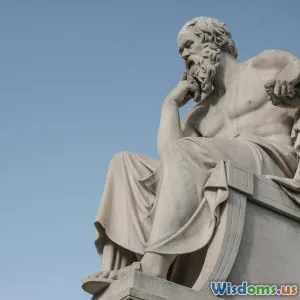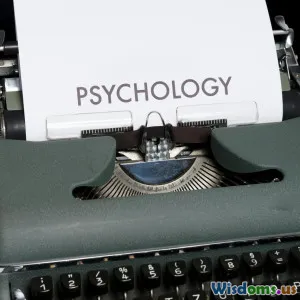
Comparing Western And Eastern Views On Historical Progress
13 min read Explore how Western and Eastern civilizations interpret historical progress, contrasting linear advancement with cyclical traditions to deepen your understanding of global worldviews. (0 Reviews)
Comparing Western and Eastern Views On Historical Progress
Introduction
Imagine two civilizations peering back through the same river of time, yet charting its course on utterly different maps. Where one sees a determined current racing toward the ocean of progress, the other observes seasons in everlasting rotation, each with patterns that echo through ages. This is not just intellectual nitpicking—these views have shaped how entire cultures conceive themselves and their destiny.
Historical progress, far from being a universal concept, is profoundly filtered through cultural worldviews. In the West, history is often perceived as a linear ascent—marked by milestones, revolutions, and the belief in perpetual advancement. The East, by contrast, is frequently associated with a cyclical understanding, in which time is viewed as reiterating patterns, with past, present, and future interwoven into recurring motifs. As modern challenges demand collaborative global thinking, recognizing these divergent approaches isn’t just academic; it’s crucial for diplomacy, education, and innovation.
This article delves into the heart of how Western and Eastern traditions envision historical progress. Through a careful examination of philosophical origins, practical impacts, and contemporary resonances, you'll emerge with insights that go far beyond textbooks—crafted to challenge, inform, and inspire your own worldview.
The Foundations: Philosophical Roots of History
The Western Linear Model: From Aristotle to the Enlightenment
In Western thought, the idea of linear progress dates back at least to ancient Greece. Although the Greeks often celebrated timeless ideals, philosophers like Aristotle and later Roman thinkers saw history as a canvas for human improvement. Over centuries, Christianity supercharged this notion with teleology—a sense that history moves from Creation through Redemption towards an ultimate end ("eschaton"). This concept echoes powerfully in St. Augustine’s City of God, where earthly history has meaning and purpose, not merely repetition.
The Renaissance, Age of Reason, and Enlightenment era further entrenched the linear view. Progress became associated not solely with spiritual development, but intellectual and material advancement. Francis Bacon, for example, proclaimed that “knowledge is power” and saw history as a saga of mankind’s emancipation from ignorance. The Industrial Revolution later provided tangible proof: science and technology, it seemed, would elevate humanity ever upward.
Key Quote:
“We may define progress as the development of an orderly structure from a less orderly structure.” — Herbert Spencer, 19th-century British philosopher
The Eastern Cyclical Model: Dharma, Yin-Yang, and Eternal Return
Many Eastern cultures embraced a cyclical understanding of history rooted in philosophical and religious beliefs. In ancient India, the concept of the yuga cycle described history as vast epochs repeating in endless loops. Hindu cosmology holds that these cycles reflect the flow of dharma (moral order) waxing and waning, with the universe repeatedly destroyed and recreated.
China’s historical outlook revolves around dynastic cycles. Confucian and Daoist traditions emphasize harmony and balance (yin and yang), with periods of order giving way to chaos and rebirth. History is a mandate perpetually at risk, to be regained and lost in rhythm with nature and society.
Likewise, Buddhist teachings reinforce cyclicality through the doctrine of samsara—repeated birth, death, and rebirth applied both individually and collectively.
Key Example:
- Mandate of Heaven: In Chinese history, when a dynasty fails its duties, calamity or rebellion is interpreted as heaven withdrawing its mandate. A new ruling house rises, and the cycle continues.
Key Characteristics: Progress as Path or Pattern
Goal-Oriented Advancement vs. Harmonic Equilibrium
Western Tenets: The Pursuit of Improvement
For the West, progress implies an unambiguously forward motion: time is an arrow heading toward increased emancipation, knowledge, and social justice. Key effects:
- Emphasis on innovation: Architectural, technological, and social breakthroughs are met with celebration.
- Rebellion as Growth: The French Revolution, Industrial Revolution, and emergence of democracies exemplify disruption as harbinger of improvement.
- Narratives of triumph: History textbooks often crescendo towards achievements—the abolition of slavery, the suffrage movement, or Moon landings.
Eastern Tenets: The Wisdom of Rhythm
Eastern views, by contrast, idealize steadiness, wholeness, and respect for tradition. Change must harmonize with nature and society.
- Innovation within boundaries: Many East Asian societies advanced technology (the ancient Chinese compass, gunpowder, printing) yet placed innovation in service of stability rather than revolution.
- Rebellion as correction: Social upheaval rebalances society when leaders overreach but restores, rather than creates, a fundamentally new order.
- Historical patterning: Emphasis is placed on repeating motifs (dynastic cycles, moral decay, and renewal), encoded in classic texts and myth.
Fact:
- In Japan, the concept of mono no aware (the awareness of impermanence) highlights the beauty and sadness of history's transience—a sharp contrast to ideas of ultimate, permanent progress.
Impacts in Society, Governance, and Innovation
Governance Styles: Revolution or Restoration?
A society’s perspective on historical progress influences governance profoundly.
Western Contexts:
- Revolutions and reformation—seen across Europe and the US—spring from a conviction that replacing old systems can radically improve human society. The American Declaration of Independence asserts “the pursuit of happiness." The French Revolution was propelled by the motto “Liberty, Equality, Fraternity,” hailing progress as both desirable and inevitable.
Eastern Contexts:
- In contrast, Chinese and Japanese governance historically aimed for continuity. Maintaining harmony encouraged gradual reform rather than sudden rupture. The 1911 Xinhai Revolution in China, for instance, sought to restore (not simply replace) legitimate order after dynastic decline. Restoration, not perpetual revolution, is often the cultural aim.
Social Attitudes: Heroes or Exemplars?
- Western Textbooks: Often focus on "great men and women" who break molds for progress, such as Galileo, Darwin, or Simone de Beauvoir—cast as heroes ushering society forward.
- Eastern Education: Prioritizes exemplars of virtue or wisdom from classic tradition. Confucius or the Emperors of antiquity are revered because they restore or embody right order.
Technological and Scientific Advancement
The trajectory of technological thought also differs under these worldviews:
- The West lionizes inventors whose disruptive ideas “change the world.” For example, Thomas Edison, Steve Jobs, or the Wright brothers.
- In many Eastern societies, invention emerges within collective continuity. Japan’s postwar economic miracle, for instance, focused intensely on continuous improvement (kaizen) rather than grand, disruptive leaps.
Case Study:
- While both the Netherlands and Ming Dynasty China pioneered printing in the 15th and 16th centuries, Gutenberg’s innovation sparked the mass spread of Protestant Reformation, while in China, printing lifeserved the transmission and preservation of Confucian classics to reinforce existing social order.
Human Agency: Masters or Stewards?
Western Outlook: Humans as Creators of Destiny
Cultures influenced by the Western progressive model view the individual as an agent of historical change. Existentialists, Enlightenment thinkers, and rationalists often place the onus for progress on human action: “Man is the measure of all things” (Protagoras).
- The “American Dream” is itself based on a belief in self-transformation and societal improvement.
- Political movements—from women’s rights to climate activism—see active campaigning as not only necessary, but moral: history bends to human intention.
Eastern Outlook: Humans as Harmonizers With Nature and Tradition
Eastern philosophies, conversely, stress humility in the face of grand cosmic cycles. The Daoist sage aims not to dominate nature, but to align with it effortlessly (wu wei).
- Social roles are often defined not by disruption, but by the ability to keep society in equilibrium, drawing on precedent and the wisdom of the past.
- This doesn’t mean passivity, but rather prioritizing sustainability, community, and moral balance over unchecked progress.
Quote:
“Nature does not hurry, yet everything is accomplished.” — Laozi
Globalization and Cultural Exchange: The Modern Blend
Cross-Pollination of Worldviews
In our interconnected world, neat dividing lines between linear and cyclical perspectives have blurred. Korea, Singapore, and China have produced unprecedented levels of technological innovation—yet still root advancement into social continuity.
- Prime Minister Lee Kuan Yew’s vision for Singapore championed economic “leapfrogging” but also stressed social harmony and traditional Confucian values.
- Asian societies like Japan have embraced Western pop culture and business practices, yet continue to respect cycles: Cherry blossom festivals, Shinto rituals, and Buddhist holidays remain integral to identity.
- Conversely, Western intellectuals increasingly recognize the limitations of unchecked progress. Sustainability movements and growing interest in “circular economies” show engagement with cyclical thinking.
Fact:
- Recent surveys (Pew Research, 2020) reveal a growing number of Europeans and North Americans questioning the automatic positivity of progress, as environmental limits challenge previous optimism.
Challenges and Opportunities of Hybrid Approaches
- Education: Global curriculums now increasingly compare both traditions, fostering cultural literacy and critical thinking.
- Policy: Effective climate policy often requires a blend—recognizing the need for change (Western dynamism) with respect for ecological cycles (Eastern wisdom).
- Business: The most innovative teams globally are those who harness both models. Silicon Valley’s appetite for disruption finds its counterpoint in East Asian dedication to process refinement and longevity.
Conclusion: Toward a Global Dialogue on History
Understanding the tension and interplay between Western and Eastern views of progress is not an academic exercise—it's a gateway to greater empathy, creative problem-solving, and policy-making that honors the richness of our shared humanity.
By appreciating history as both a line toward improvement and a circle echoing time-tested truths, we position ourselves not just to predict the future, but to shape it wisely. As global challenges call for tools from both toolkits—innovation and tradition, ambition and wisdom—the most promising path forward may be, paradoxically, the one that loops back even as it drives ahead.
Actionable Thought:
- Which elements of both Western and Eastern progress resonate most with your personal and professional journey? In what ways can this understanding inform your decisions in a rapidly changing world? Embrace both maps, and you may find more guideposts than you imagined.
Rate the Post
User Reviews
Popular Posts
















